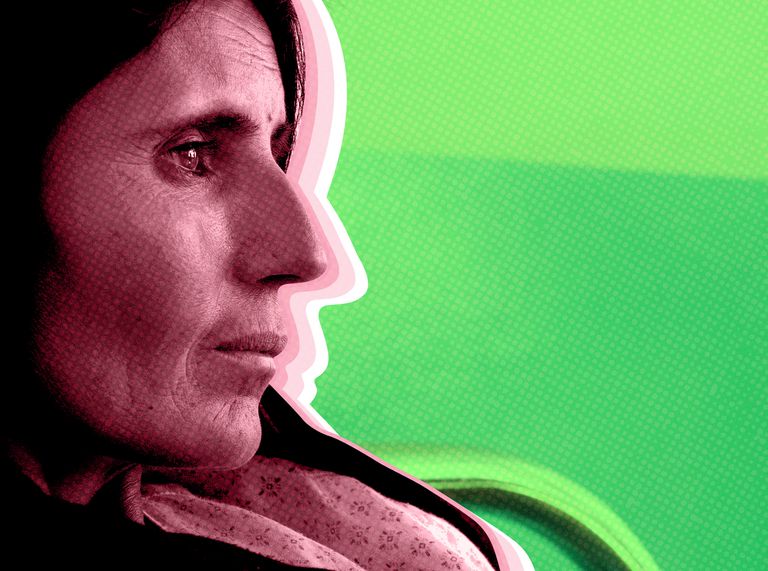Sherbano gripped her children tightly and wept. She had a hard mass growing in her breast, and a dangerous 700 kilometre journey ahead of her.
At 30, she had never left home before, never parted with her nine children, or her husband – even for a day. But on a sweltering day this August, Sherbano said goodbye to her family. She didn’t know if she’d ever see them again.
Her husband had scraped together a few hundred dollars – money that could have supported their impoverished family for several months – selling grapes from vines in front of their mud house in war-ravaged Helmand, in southern Afghanistan. Her family hoped it would be enough to get her to the bustling capital, Kabul, where doctors in the country’s sole oncology ward might save her life.
They worried she might die on the days-long bus journey through Taliban strongholds, along winding, unpaved roads and across government checkpoints. But despite clashes between militants along the way, Sherbano made it to Kabul.
There, perched on concrete ground outside Jamhuriat Hospital for days with dozens of other sick patients, she waited for a bed.
‘Only God knows if I’ll be fine or not,’ Sherbano says quietly, resting in a blue hospital bed.
She’s one of thousands of women suffering from breast cancer in Afghanistan. In the UK, an estimated 80 percent of women survive for at least five years with breast cancer, and an estimated 90 percent of women will survive in the US during that same time frame. But the disease is often a death sentence for Afghan women.
In Afghanistan, there is only one oncology department in the entire country. There is no readily available chemotherapy, and no radiation.
Here, breast cancer is the second leading cause of death of women behind maternal mortality, according to the World Health Organisation and medical experts. And while maternal mortality rates have decreased significantly, the rates of breast cancer survival are not improving. Sound statistics are hard to come by in Afghanistan, but there’s evidence that more women might die from breast cancer than they do from war.
Like most of the Afghan women who end up at Jamhuriat Hospital, with its seafoam green hallways packed with desperate patients waiting for beds, Sherbano has late-stage breast cancer.
There is only one practicing oncologist in all of Afghanistan, according to doctors here – Dr. Zabi Stanekzai, head of cancer diagnostics at Jamhuriat Hospital.
Thirty-three-year-old Dr. Sohaila Niazi, however, plans to become the second – and the country’s first-ever female oncologist. She trained in Pakistan and specialises in cancer treatment. She’s also Sherbano’s doctor, the woman tasked with trying to save her life despite limited means and time that’s running out.
Dr. Niazi hopes to travel abroad soon to complete an oncology residency program, which is not offered in Afghanistan, though she says she needs a financial scholarship to do so. At Jamhuriat Hospital, Sohaila works alongside her 27-year-old sister Najia, who says she’s the country’s sole cognitive behavioural therapist working with patients diagnosed with cancer.
‘I’m happy to be here,’ Sherbano says, a slight smile spreading across her face. ‘They’re like my sisters.’
In Pakistan – where Sohaila and Najia grew up and studied, and where many Afghans go for medical treatment if they can afford it – the sisters learned there were barely any cancer doctors back in Afghanistan.
‘I must go,’ said Sohaila, who told her father she wanted to be a doctor at age two. Afghanistan ‘needed’ her. She wanted to save as many women as she could.
Doctors like Sohaila are rare, though increasing numbers of women are becoming nurses, midwives, and doctors. Across Afghanistan, poverty, war and a shortage of trained medical professionals make it even more difficult for women to seek medical care. Many Afghan women are not allowed to – or choose not to – see male doctors and nurses, due to cultural norms that keep men and women who are not related largely segregated in public life.
One year ago, while Sherbano breastfed her eighth child, she found a hard mass.
‘I didn’t know what it was,’ she says, nervously re-adjusting her headscarf. Sherbano worked up the courage to show her breast to her mother-in-law, who urged her to see a doctor.
In Helmand, she only found a male doctor, to whom she could not show her breast. Instead, she showed a female nurse, who described it to the male doctor, who then told her to get medical treatment in Pakistan, which Sherbano’s family could not afford.
Months later, after Sherbano lost life-saving time, she managed to make it to Jamhuriat, where she’s relying on donations to pay for chemotherapy – treatment that likely won’t save her. At best, they say, Sherbano has a year left to live.
It’s a story doctors like Sohaila hear over and over again.
‘I was ashamed to go to a doctor,’ says another woman, Abida, who is 25-years-old with five children. An IV is taped to her emaciated arm for another round of chemotherapy. She pulls up her hospital gown showing deep scarred gashes on her legs, and four missing toes. She survived a rocket attack on her house years ago, during clashes between Taliban and international forces allied with the Afghan military. But it’s the cancer that might kill her.
Read full article here.


 Sophia Jones
Sophia Jones
